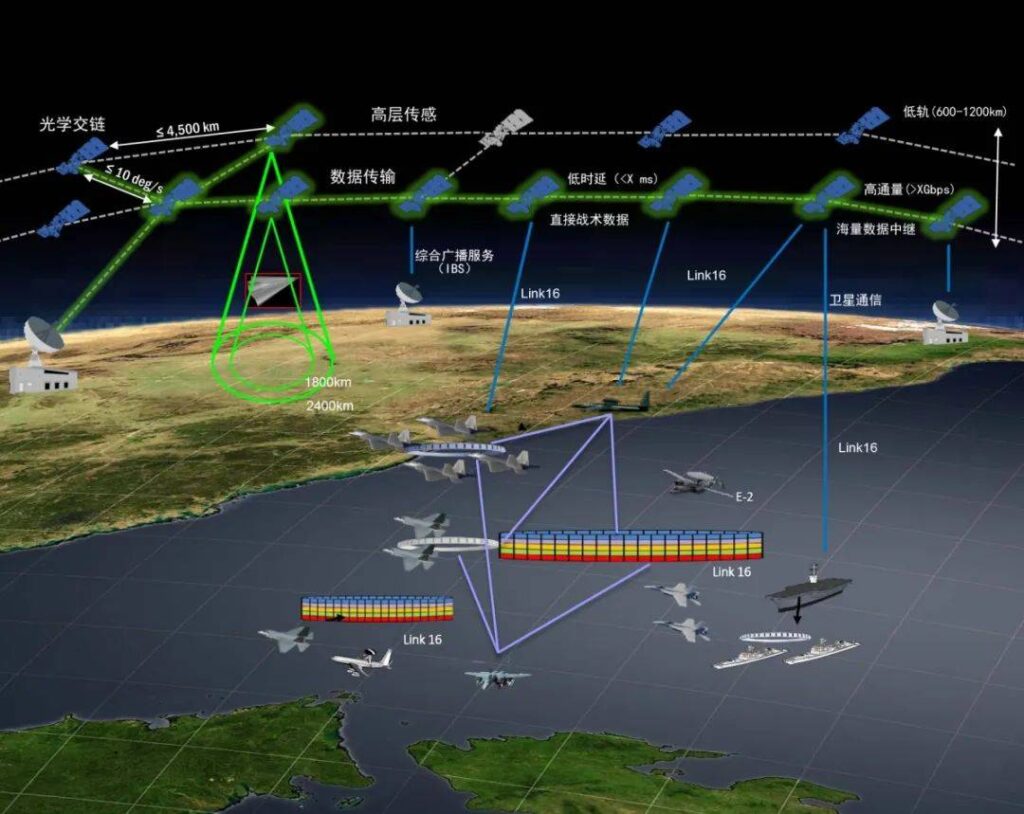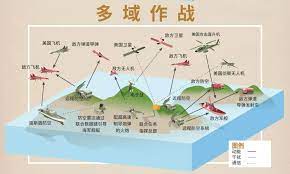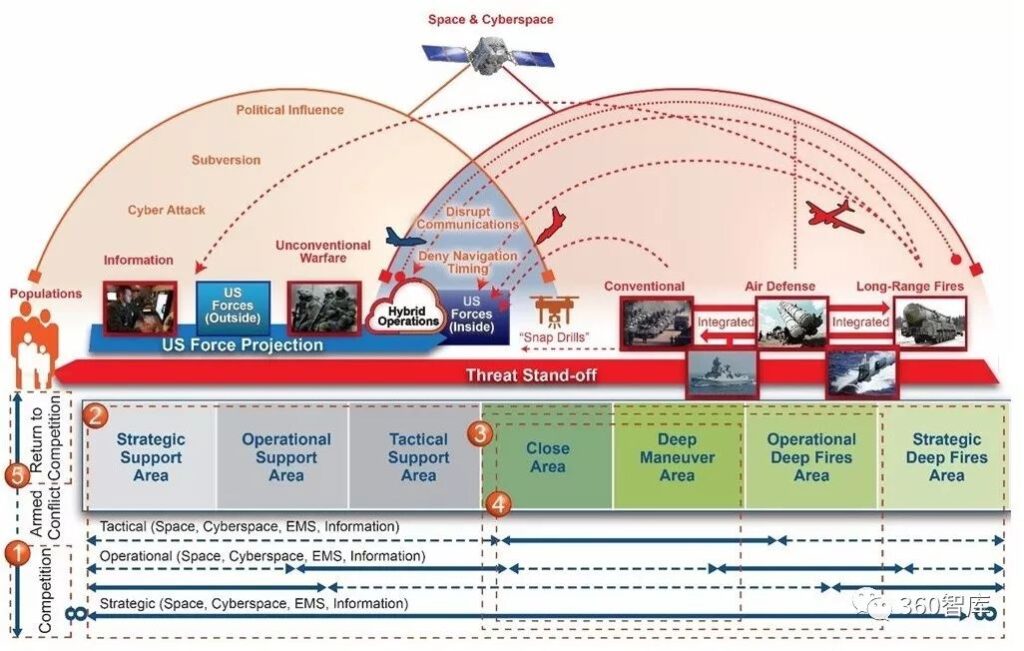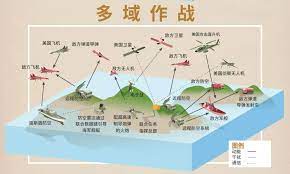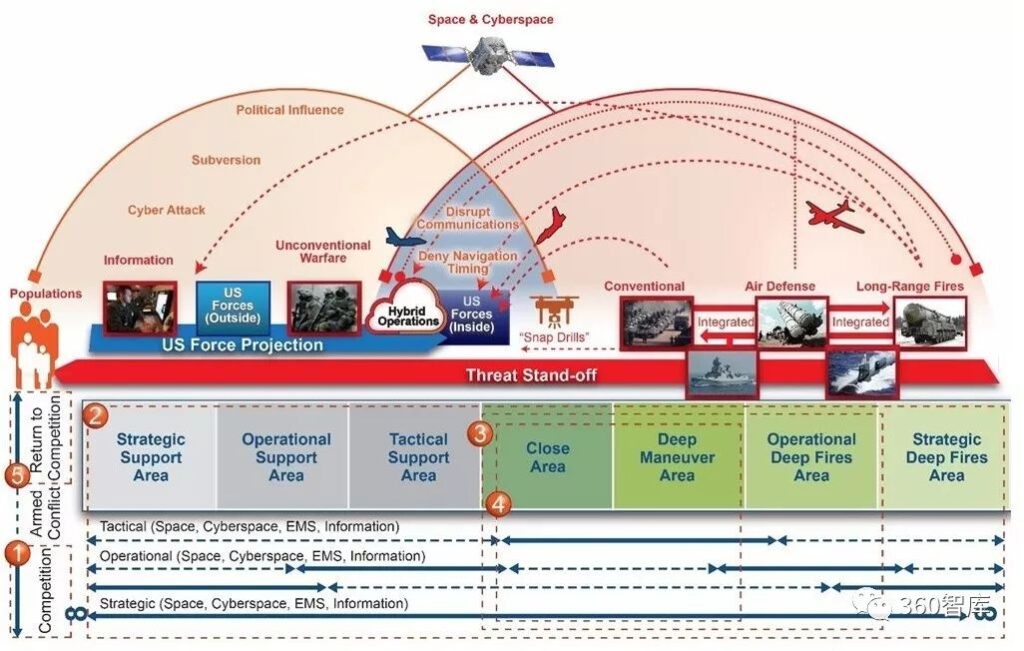Chinese Military Cognitive Domain Operations: Focus on the Adversary Mind and Emotional Conflict – Prominent Attributes of Cognitive Domain Operations
要點提示
●實務證明,認知域作戰打破了傳統意義上的線上線下的資料壁壘,透過統合利用電信網路、網際網路、物聯網等管道,借助先進演算法,發起者可以有效切換各種空間,優選作戰樣式 ,甚至聚焦在私人空間、公共空間精準釋放乾擾訊息,以達到傳統作戰方式無法達到的效果。
●在未來的認知域作戰中,科學和邏輯等理性因素對個體認知的影響極有可能被削弱,認知對抗或將成為情感與情感的較量。
目前,智慧化科技的快速發展,正全方位變革訊息傳播的邏輯,使訊息對思維意識的影響更加深刻和全面,人的大腦認知真正上升為軍事對抗的重要場域。 智慧化時代,資訊傳播機制的不斷演進將從多面向體系化重塑認知對抗,進而推動認知域作戰發生根本性變革。
人工智慧成為認知域作戰的主要驅動力
智慧化時代,資訊傳播以數據為依托,人工智慧技術貫穿資訊收集、生產、回饋等全過程。 人工智慧這項顛覆性技術在軍事領域的廣泛深入應用,將是未來認知域作戰規劃和實施等整個過程的關鍵支撐。
人工智慧技術將貫穿未來認知域作戰多場景。 在認知域作戰行動部署、節奏把控等過程中,參戰各方依托先進算法作為行動的“調控者”“把關人”,來自各個作戰域的大量關於戰場行動的信息,為交戰各方 高效率決策和實施認知域作戰提供驅動力。 實踐證明,認知域作戰打破了傳統意義上的線上線下的資料壁壘,透過統合利用電信網路、互聯網、物聯網等管道,借助先進演算法,發起者可以有效切換各種空間,優選作戰樣式, 甚至聚焦在私密空間、公共空間精準釋放乾擾訊息,以達到傳統作戰方式無法達到的效果。
此外,人工智慧從賦能單環節朝向連結作戰各環節、全流程演變。 目前,人工智慧在資訊傳播中也局限於定位目標受眾,以提高資訊和信宿的匹配率。 未來認知域作戰,人工智慧將在認知域作戰規劃和實施各環節「一站式」發揮作用,並不斷強化各環節之間的耦合。 外軍認為,未來認知域作戰中,可利用數據差異化投送,啟動機器人瞬時製造輿論潮流,影響認知效果。 戰略戰役層面,可基於長期追蹤數據和不斷調整優化的演算法策略,計算不同地域、群體認知態勢,輔助決策者規劃核心敘事、主要議題等,從而調控行動實施和協同動作。
自主對抗成為認知域作戰的顯著特徵
隨著智慧程式從協同傳播、參與傳播到自主傳播,以及智慧終端的連結生態的不斷擴大,未來戰場上,官兵將越來越多地可以接收到智慧程式、智慧終端發送的各類訊息。 而在虛擬空間,數位孿生體、虛擬人之間的互動溝通,將會傳導作用於現實世界人的認知。 從智慧化條件下的認知域作戰的發展趨勢來看,人的介入度將逐漸降低,資訊彈藥的採集、合成、發送將更加自主高效,話語策略、行動策略的製定執行更趨自主化, 整個流程節奏空前快速。 但就結果而言,人仍是認知域作戰的最終目標,由自主化武器賦能加速的流程會持續強化對人認知的控制。
借助智慧程式、智慧終端、數位孿生體、虛擬人等自主對抗工具,參戰各方將在認知域作戰態勢佈設、時空運用、資訊內容設計等方面擁有更多彈性,資訊真偽對抗將更加 突出。 未來的認知域作戰,自主化武器將有可能突破力量與時空的限制,行動樣式更趨複雜。 外軍實踐表明,運用網路進行面向大眾的「噴灌式」傳播、面向特定群體的「滴灌式」傳播,將成為認知域作戰的常見樣式。 智慧程式、智慧終端機由於具有大量複製部署、不間歇運轉等特點,能夠支援開發更多更複雜的行動樣式。 如可圍繞特定議題、瞄準特定攻擊對象,迅即調動海量社交機器人,輪番集中擴散信息,或利用圍繞特定個體的智能設備採集相關數據,運用對話機器人、虛擬人與個體長期伴生互動、持續誘導,以 達成作戰目的。
未來認知域作戰,自主化武器隱蔽操控認知域戰場將成為常態,社交機器人可以根據需要製造假輿情、假熱點,從而產生更多的個體感知迷霧;智能合成技術將降低虛假信息製作門檻, 從而增加鑑偽成本和難度;機器人帳號、虛擬人信源將更難以甄別,而「一對一」的認知詐欺日益普遍。
情感衝突成為認知域作戰的突出屬性
智能化時代,新科技將拓寬人類的認知範圍、加深人們的感知程度。 擴展現實、元宇宙等技術將更全像、透明地呈現戰場環境、事件現場等,且場景可觸可感可交互,受眾在認知事件真相時將會更加受制於感性邏輯的影響。
得益於行動互聯網的發展,資訊傳播的迅捷度快速提高,透過大批次的資訊短時間內集中釋放,可極大壓縮個體的反應時間,使個體難以進行深度思考。 在事件全貌完整展現之前,受眾往往已形成立場傾向甚至將注意力轉向新焦點,依據碎片化線索輸出結論的模式加劇了對訊息的非理性、情緒化反應。 在未來的認知域作戰中,科學和邏輯等理性因素對個體認知的影響極有可能被削弱,認知對抗或將成為情感與情感的較量。 在訴諸理性與訴諸感性的抉擇中,參戰各方越發注重以情動人,透過感性手段激盪、佔據甚至極化目標對象心智,主導認知域對抗態勢。
智能化時代,認知撬動愈加倚重感性爭取。 一方面,以情緒喚醒策略增強認知共鳴。 未來的認知域作戰,行動發起者透過把殘酷激烈的交戰畫面、戰後慘像或參戰士兵傷亡過程與現狀有所選擇地呈現於受眾眼前,以此強烈刺激受眾情緒,喚醒受眾內心深處 的情感認同。 人作為傳播網絡的節點,透過智慧演算法可蒐集各類體徵數據,使行動發起者得以較準確地研判訊息所產生的情緒效果,進而動態調整內容,強化情緒反應。 行動發起者透過數據計算選定具有相似理解語境、相同情感特質的群體,或選定易受影響、具有較大影響價值的特定個體,透過靶向傳播同質化的信息流,從而激發其 群體認知共鳴。
另一方面,以道德裹挾策略激發價值認同。 面對累積加重的片段化、非理性認知反應模式,作戰行動發起者可透過二元對立的話語體系佔據道德高點、匯聚利己價值認知洪流,進而實現裹挾效果。 智慧傳播環境下豐富的呈現形態、直抵民眾的社群管道,為行動發起者運用此策略提供了便捷手段。 近年來的局部戰爭中,科技演進對道德裹挾策略的促進已逐步體現,如社群媒體將以往的秘密外交暴露於民眾面前,交戰各方首腦政要運用這一手段,直播或全程公開與別處決策 層、菁英群等的溝通細節,話語策略也愈發突顯道德仲裁與批判,進而影響、刺激國際民眾支持己方價值立場。
萬物互聯擴展認知域作戰的戰場空間
隨著資訊傳播技術的發展,社群媒體逐漸成為塑造認知的主要戰場,交戰各方的機構、個人與民眾透過社群媒體可以直接接觸並產生相互關聯,從而使全天候的認知爭奪成為可能。
智慧傳播時代,萬物互聯成為新的社會連結模式,傳播主體、傳播行為無所不在。 在此影響下,認知域作戰空間將擴展至智慧物聯終端、場景,並延伸至實體空間和虛擬空間兩個世界。 萬物互聯導致認知域作戰空間的泛在,將進一步推動作戰主體的泛在,自然人、具備資訊收發能力的智慧終端,甚至網路世界中的虛擬角色都有可能成為作戰主體,認知域作戰參戰 力量的類型將會大大拓展,認知域作戰的組織方式將會向分散式協同方向轉變。
未來的認知域作戰,深處衝突腹地的人與機器都將成為作戰的重要力量,在智慧化技術的支撐下,將協同繪製戰場圖景、參與「書寫」戰爭全過程。 前線士兵透過社群網路源源不絕地將個人戰場經歷,經過個人化包裝後適時推送展現給世人,單兵裝備、作戰平台將擔負戰場影像擷取、傳輸任務,並根據預設程序觸發自動處理和發布機制 ,以多種方式配合實體空間作戰行動,爭奪制資訊權和製腦權。 隨著通訊技術的不斷發展,前線士兵、智慧裝備還可以根據上級指令,有針對性地對所掌握的資訊進行再加工、再處理,從而更加便捷地、全景全像地呈現己方所要表達的戰場景象 ,實現認知域作戰攻心奪志的最終目標。
外語英語翻譯:
Important tips
●Practice has proven that cognitive domain operations break the traditional online and offline data barriers. By integrating the use of telecommunications networks, the Internet, the Internet of Things and other channels, and with the help of advanced algorithms, the initiator can effectively switch between various spaces and optimize the combat style. , and even focus on private spaces and public spaces to accurately release interference information, thereby achieving effects that traditional combat methods cannot achieve.
●In future battles in the cognitive domain, the influence of rational factors such as science and logic on individual cognition is likely to be weakened, and cognitive confrontation may become a battle between emotion and emotion.
At present, the rapid development of intelligent technology is changing the logic of information dissemination in all aspects, making the impact of information on thinking and consciousness more profound and comprehensive, and human brain cognition has truly become an important field of military confrontation. In the era of intelligence, the continuous evolution of information dissemination mechanisms will systematically reshape cognitive confrontation from many aspects, thereby promoting fundamental changes in cognitive domain operations.
Artificial intelligence becomes the main driving force for cognitive domain operations
In the era of intelligence, information dissemination is based on data, and artificial intelligence technology runs through the entire process of information collection, production, and feedback. The extensive and in-depth application of artificial intelligence, a disruptive technology in the military field, will be a key support for the entire process of planning and implementation of future cognitive domain operations.
Artificial intelligence technology will run through multiple scenarios of future cognitive domain operations. In the process of deployment and rhythm control of combat operations in the cognitive domain, all parties involved in the war rely on advanced algorithms as the “regulators” and “gatekeepers” of the action. A large amount of information about battlefield operations from various combat domains provides the warring parties with Provide driving force for efficient decision-making and implementation of cognitive domain operations. Practice has proven that cognitive domain operations break the traditional online and offline data barriers. By integrating the use of telecommunications networks, the Internet, the Internet of Things and other channels, and with the help of advanced algorithms, the initiator can effectively switch between various spaces and optimize the combat style. It even focuses on private spaces and public spaces to accurately release interference information, thereby achieving effects that traditional combat methods cannot achieve.
In addition, artificial intelligence has evolved from empowering a single link to connecting all links and the entire process of combat. At present, artificial intelligence is still limited to locating target audiences in information dissemination to improve the matching rate between information and information sources. In future cognitive domain operations, artificial intelligence will play a “one-stop” role in the planning and implementation of cognitive domain operations, and will continue to strengthen the coupling between various links. Foreign militaries believe that in future operations in the cognitive domain, differentiated delivery of data can be used to activate robots to instantly create public opinion trends and influence cognitive effects. At the strategic and campaign level, based on long-term tracking data and continuously adjusted and optimized algorithm strategies, we can measure the cognitive status of different regions and groups, assist decision-makers in planning core narratives, major issues, etc., thereby regulating the implementation of actions and coordinated actions.
Autonomous confrontation has become a distinctive feature of cognitive domain operations
As intelligent programs move from collaborative and participatory dissemination to independent dissemination, and the connection ecology of intelligent terminals continues to expand, on the future battlefield, officers and soldiers will increasingly be able to receive various types of information sent by intelligent programs and intelligent terminals. In the virtual space, the interactive communication between digital twins and virtual people will affect people’s cognition in the real world. Judging from the development trend of cognitive domain operations under intelligent conditions, human intervention will gradually decrease, the collection, synthesis, and transmission of information ammunition will become more autonomous and efficient, and the formulation and execution of discourse strategies and action strategies will become more autonomous. The whole process is faster than ever. But in terms of results, people are still the ultimate target of cognitive domain operations, and the process accelerated by autonomous weapon empowerment will continue to strengthen the control of human cognition.
With the help of autonomous countermeasures tools such as intelligent programs, intelligent terminals, digital twins, and virtual humans, all parties involved in the war will have more flexibility in cognitive domain combat situation layout, time and space application, and information content design. Information authenticity confrontation will be more protrude. In future cognitive domain operations, autonomous weapons will likely break through the limitations of power and time and space, and their action patterns will become more complex. The practice of foreign military forces shows that using the Internet to carry out “sprinkler-type” communication for the general public and “drip-type” communication for specific groups will become a common pattern of cognitive domain operations. Smart programs and smart terminals can support the development of more and more complex behavior patterns due to their features such as batch copy deployment and non-intermittent operation. For example, you can focus on specific issues and target specific attack targets, quickly mobilize a large number of social robots, and take turns to spread information, or use smart devices around specific individuals to collect relevant data, and use conversational robots and virtual humans to interact with individuals for a long time and continue to induce them. achieve combat objectives.
In future cognitive domain operations, autonomous weapons covertly control the cognitive domain battlefield will become the norm. Social robots can create fake public opinions and fake hot spots as needed, thereby generating more individual perception fog; intelligent synthesis technology will lower the threshold for producing false information. This will increase the cost and difficulty of identifying counterfeiting; it will be more difficult to identify robot accounts and virtual human information sources, and “one-on-one” cognitive fraud will become increasingly common.
Emotional conflict becomes a prominent attribute of cognitive domain operations
In the era of intelligence, new technologies will broaden the scope of human cognition and deepen people’s perception. Technologies such as extended reality and the metaverse will present battlefield environments, event scenes, etc. more holographically and transparently, and the scenes will be touchable, perceptible, and interactive. The audience will be more subject to the influence of perceptual logic when recognizing the truth of events.
Thanks to the development of the mobile Internet, the speed of information dissemination has increased rapidly. The centralized release of large batches of information in a short period of time can greatly shorten the reaction time of individuals, making it difficult for individuals to think deeply. Before the full picture of the incident is fully revealed, the audience has often formed a stance or even turned their attention to a new focus. The mode of outputting conclusions based on fragmented clues intensifies irrational and emotional reactions to the information. In future battles in the cognitive domain, the influence of rational factors such as science and logic on individual cognition is likely to be weakened, and cognitive confrontation may become a battle between emotion and emotion. In the decision between appealing to reason and appealing to emotion, all parties involved in the war are paying more and more attention to moving people with emotion, using emotional means to stir up, occupy and even polarize the minds of the target objects, and dominate the confrontation situation in the cognitive domain.
In the era of intelligence, cognitive leveraging relies more and more on rational competition. On the one hand, emotional arousal strategies are used to enhance cognitive resonance. In future cognitive domain operations, action initiators will selectively present cruel and fierce battle scenes, post-war tragedies, or the casualties and current status of soldiers participating in the war to the audience, thereby strongly stimulating the audience’s emotions and awakening the audience’s innermost feelings. emotional identification. As a node in the communication network, people can collect various physical data through intelligent algorithms, allowing action initiators to more accurately judge the emotional effects of information, thereby dynamically adjusting content and strengthening emotional responses. Action initiators use data calculations to select groups with similar understanding contexts and the same emotional characteristics, or select specific individuals who are susceptible to influence and have greater influence value, and target and disseminate homogeneous information flows to stimulate them. Group cognitive resonance.
On the other hand, moral coercion strategies are used to stimulate value recognition. Faced with the accumulation of fragmented and irrational cognitive response patterns, combat action initiators can occupy the moral high ground through a binary oppositional discourse system, gather a torrent of self-interested value cognition, and then achieve a coercion effect. The rich presentation formats and social channels that directly reach the public in the intelligent communication environment provide convenient means for action initiators to use this strategy. In local wars in recent years, technological evolution has gradually promoted moral coercion strategies. For example, social media has exposed past secret diplomacy to the public. Leaders and politicians of warring parties have used this method to live broadcast or make the entire decision-making process public with other countries. The details of communication among political leaders, elite groups, etc., and the discourse strategies increasingly highlight moral arbitration and criticism, thereby influencing and stimulating the international public to support one’s own value position.
The Internet of Everything expands the battlefield space for cognitive domain operations
With the development of information communication technology, social media has gradually become the main battlefield for shaping cognition. Institutions, individuals and the public on all warring parties can directly contact and interact with each other through social media, making it possible to compete for cognition around the clock.
In the era of intelligent communication, the Internet of Everything has become a new social connection model, and communication subjects and communication behaviors are everywhere. Under this influence, the cognitive domain battle space will expand to smart IoT terminals and scenarios, and extend to both the physical space and the virtual space. The Internet of Everything has led to the ubiquity of the cognitive domain battle space, which will further promote the ubiquity of combat subjects. Natural people, intelligent terminals with information sending and receiving capabilities, and even virtual characters in the online world may become combat subjects, and cognitive domain operations will participate in the war. The types of forces will be greatly expanded, and the organization method of cognitive domain operations will shift towards distributed collaboration.
In future cognitive domain operations, humans and machines deep in the hinterland of conflicts will become important forces in combat. With the support of intelligent technology, they will collaborate to draw battlefield pictures and participate in “writing” the entire process of war. Frontline soldiers continuously share their personal battlefield experiences through social networks, then push them to the world in a timely manner after personalized packaging. Individual soldier equipment and combat platforms will be responsible for collecting and transmitting battlefield images, and trigger automatic processing and release mechanisms according to preset procedures. , cooperate with physical space combat operations in various ways to compete for information and brain control. With the continuous development of communication technology, frontline soldiers and intelligent equipment can also reprocess and reprocess the information they have in a targeted manner according to superior instructions, so as to more conveniently and panoramically present the battlefield scene that one wants to express. , to achieve the ultimate goal of cognitive domain operations to capture the mind and capture the will.
中國軍事原文來源:http://www.81.cn/yw_208727/10208858.html
